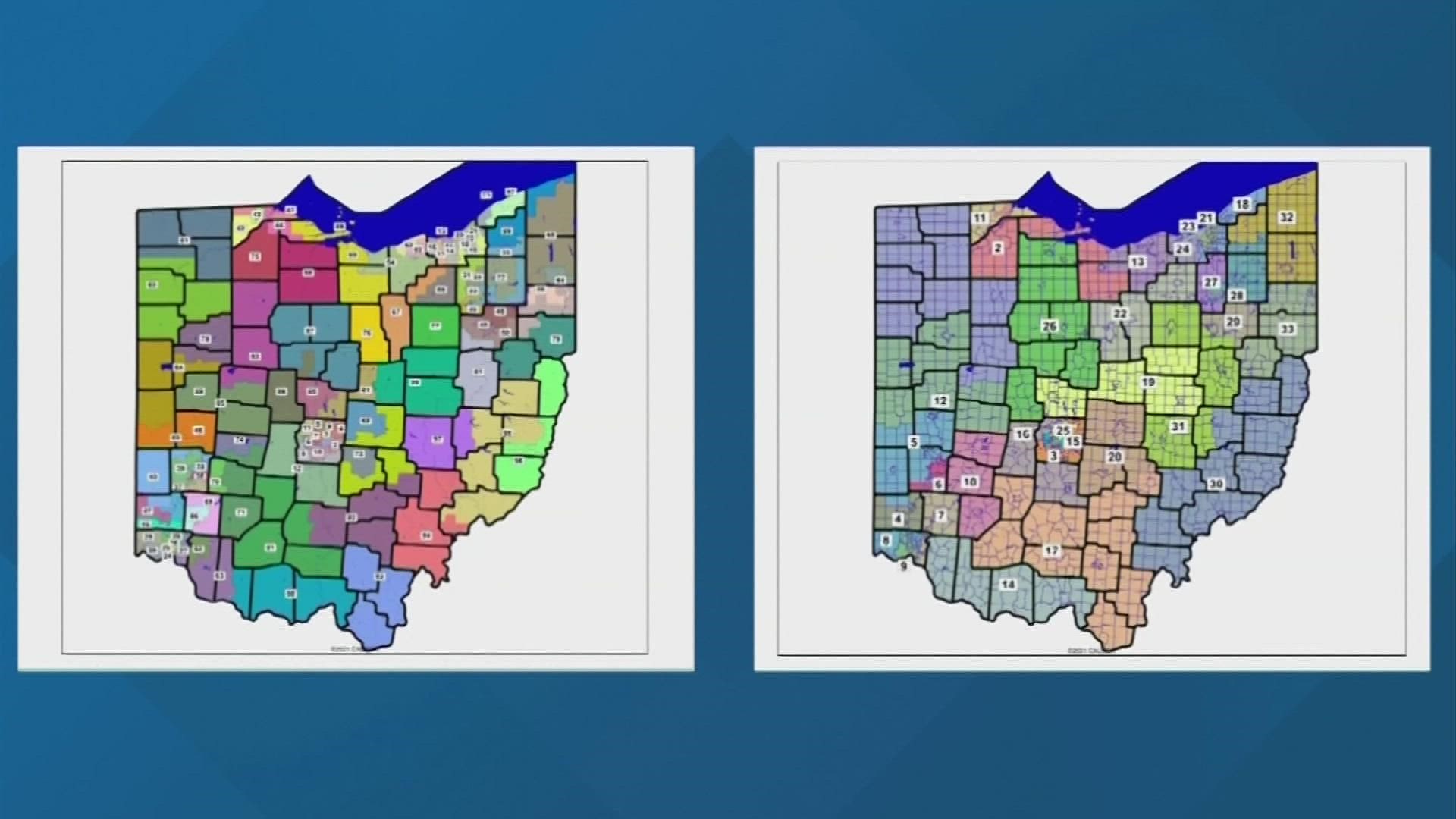COLUMBUS, Ohio — A divided Ohio Supreme Court issued an extraordinary fourth rebuke Thursday of the state’s Republican-controlled redistricting panel, declaring mapmakers' latest maps for Statehouse districts yet another partisan gerrymander.
By a vote of the same bipartisan 4-3 majority that ruled against the previous three maps, the court ordered the embattled and defiant Ohio Redistricting Commission back to the drawing board again. It set a May 6 deadline for completing the next plan.
That date falls after a Wednesday deadline set by a federal court for ironing out differences between the court and the commission. It wasn't immediately clear how the ruling would impact the U.S. District Court's path forward. Voting in the May 3 primary has already begun without legislative races listed.
In Thursday's ruling, the court said the commission’s latest plan still violates a 2015 constitutional amendment overwhelmingly passed by Ohio voters. That amendment said the panel must attempt to avoid partisan favoritism and also must try to proportionally distribute districts to reflect Ohio’s political makeup, which is split at about 54% Republican, 46% Democratic.
Republicans argued that the fourth set of maps — like three earlier versions — met those requirements.
The plan was adopted in a flurry just hours before the last court-set deadline. The commission's Republican majority left the work of two independent mapmakers hired during that round to transparently carry out the painstaking process on the cutting room floor, on grounds their work couldn't be done in time.
“The independent map drawers’ efforts were apparently little more than a sideshow — yet more fodder in this political sport,” Justice Michael P. Donnelly wrote in his concurring opinion.
Chief Justice Maureen O'Connor, a moderate Republican, again joined the court's three Democrats to form the majority, with the other three Republicans dissenting.
Justice Sharon Kennedy, a candidate to succeed O'Connor, accused the majority of “yet another wiping-egg-from-its-face moment.”
“Now, after months have passed and thousands of taxpayer dollars have been spent, we are right back to where we were on September 21, 2021, (shortly before the first lawsuit was filed) without any end in sight,” Kennedy wrote in her dissent.
Ohio Secretary of State Frank LaRose released a statement following the Supreme Court's decision:
"Ohioans should continue to cast their ballots on or before May 3 to ensure their voices are heard in this important primary election,” said LaRose. “The court’s latest ruling has no impact on that election at all, and contests for statewide, congressional, and local offices and issues will proceed as scheduled. This ruling only impacts state legislative and political party central committee contests, which have yet to be scheduled.”
Additionally, the majority opinion stated the following:
“It is unclear as to why August 2, 2022, is the last available date for a primary election in Ohio. We note that several states will have primary elections on August 16, 2022, or later, including four states that will have their primary elections in September.”
This statement by the Democratic members of the court and the Chief Justice indicates a shocking and clear ignorance of Ohio law. Despite having a former Secretary of State on their panel, the majority did not consider the fact that each state’s election system is unique, or that Ohio’s elections have their own statutory requirements, and because of these requirements it would require a violation of Ohio law for any primary to be held after August 2. In fact, the filing deadline for nominating petitions for nonpartisan races in the General Election, as set in Ohio law, is August 8, 2022. To be clear, any primary held after August 2 would directly conflict with the statutorily required deadlines of the General Election.
Additionally, the majority on the court fails to contemplate that Ohio law also allows for special elections to take place on August 2, and several counties are expected to conduct a special election to consider local issues. These elections include their own statutorily required deadlines, from early voting periods beginning four weeks before election day to the completion of the official canvass 21 days after Election Day. Requiring a different primary election to take place on a date within the August 2 election window would not only cause significant voter confusion, but it also wouldn't be physically possible without each impacted county board of elections doubling their staff and each piece of election infrastructure.
“The part I find most alarming about this ruling is the flagrant disregard for the critical timing and deadlines of Ohio’s elections process,” said LaRose. “Despite having the first-hand knowledge of a former chief elections officer on its bench, the court's majority ignores and, in fact, attempts to rewrite the key requirements of election administration literally spelled out in the law. We will reinforce those statutory timelines to the federal court and hope that constitutional convictions prevail.”

